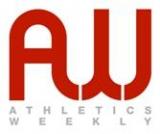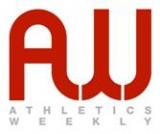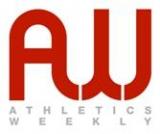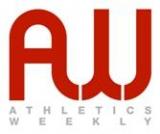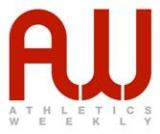Folders |
How they train Mel NichollsPublished by
The double IPC European medallist spoke to Matt Long about her progressionMel Nicholls took silver over 800m to go with her bronze over 100m at the IPC European Championships in Swansea in August. Not content to rest on her laurels, she followed those performances with a third in the wheelchair race at the Great North Run at the beginning of September. The 37-year-old has a personality as bright as her pink and orange socks which carry her mantra dream big”. Incredibly, the Coventry Godiva athlete only began training in earnest in the winter of 2010 after attending a UKA Come and Try” day where she first sat in a racing chair. She explains: At an event organised by the British Wheelchair Racing Association I was then lent a chair by Ian Thompson, which helped me to learn the basics of pushing on the roads around my home in Cheltenham.” She is keen to credit her first coach, Ed Grazier, who still advises her but met her current coach, Job King, at a wheelchair racing seminar. She says: At the time I was not able to drive following my stroke so I couldn t attend training on a regular basis, plus having had horses all my life, I was still spending all of my time at the stables with my four-legged friends, who always came first!” The pathway to training and competitions came after an original classification as a T33 athlete. A switch to the T34 category was made at a time when she began to train twice daily, six days a week at Coventry and at Warwick University Wheelchair Racing Academy. Self-funded trips to both Netherlands and Switzerland literally paid off with Nicholls opening her first year of racing in 2011 with the Paralympic A-standard qualifying times. Reflecting on her Paralympic selection in 2012, she recalls: It was something the then Paralympic head coach, Peter Eriksson, said to me during early 2012. He told me ‘you have to believe in yourself and he was right, and from that point I did. I trust and respect my coach, as he does me, but I also trust myself. I know what I have to do to get where I want to and I will do everything I can to achieve that and more. I don t put ceilings on any goal, there are no limits. There s nothing wrong with dreaming as long as you dream big!” Her abiding memories of London 2012 are easy to recall. I had been warned about the noise, but I couldn t really believe it or imagine it,” she says. This was my first major international competition and I had never raced in front of 50 people, let alone 80,000. I was not scared though. It was the most amazing, heart-warming feeling out there, and those in the crowd all felt like my friends. I don t really remember the actual race 100m is over so quickly and it s either gone right or it hasn t, but I do remember the feeling immediately afterwards. I can still see and hear the crowds cheering, high-fiving, asking for autographs and photos. They didn t care what my time was we were in London and I was their athlete, we were all brought together by sport and the Paralympic Games and I felt like a rock star!” Although she started off as a sprinter before progressing to an endurance athlete, she denies it was her world record over 1500m (4:12.56) set in Grosseto at the Italian Open Championships in May 2013 which prompted the move. I ve always preferred longer distances,” she says. I m built more as an endurance athlete and I love using my brain and not just my brawn to race. I m not a natural sprinter and with my impairment, apart from being hemiplegic only having the power coming from my right side the messages can be slow to travel and the reactions slower and this is why my start is my weakest area. My right side has to work for both when I m getting going so I lose a lot of power on the start. I have to have my chair set-up slightly to the right so that when I start I can keep straight. Thankfully, since London 2012 where we had only 100m and a 200m races, the Rio 2016 programme has announced a 100m and 800m for my classification so I will be concentrating on the 800m.” She acknowledges the contribution of UKA, Lottery Funding and UK Sport for facilitating her development. With personal bests of 29:08 for 10km and 53:39 over the half-marathon at the Great North Run, road racing is clearly on her agenda for the future. She adds: I know I can do sub-28min for 10km in the right race and I do plan to do a marathon soon and I m certainly eyeing up London next year.” Referring to the technical differences between road and track, she divulges: I find the road helps my track racing. It s a lot more technical, but you have the chance to really work on your speed and strength on the hills. Steering and pushing simultaneously is something I have yet to master fully, but thankfully I don t need to worry too much about that on track, as long as I have set my compensator correctly and remember to hit it at the appropriate times.” In looking forward to the path between now and Rio, she credits Gloucestershire s Hartpury College for their ongoing support. Nicholls says: I love middle-distance racing and having broken my own 1500m world record more than once this year, I am confident there is a more to come in the next couple of years.” Favourite training sessionA road session or tactics practice. Least favourite sessionA short sprint pyramid or a one-pace 30-minute roller session. TYPICAL TRAINING WEEKTraining weeks vary. Winter work consists of fitness, endurance and technical work. During the summer season it is sharper work, keeping fresh and healthy and race-ready. Summer races are between 100m-5000m. Winter races are a mix of road races, duathlons and handbike races. Monday: (am) Weights. (pm) Road circuit 10-13 miles. My weights and strength and conditioning are both areas that I need to have more input with this winter. Following my shoulder injury last year, much of it was set by my British Athletics physios Laura Penhaul and Leigh Halfteck as rehab and it has progressed on from that. I have the support of Tom Cresswell at Hartpury College and I bounce ideas between the three of them where I think I can go with this. Basically with guidance, I make my own strength and conditioning plan. It has been very much upper-body focused and aimed at strengthening and protecting my shoulders and supporting structures as injury prevention as well as now working on increased speed and strength stamina. This includes bench press, cable work, suspended rings, TRX and stability work. As I can t work my left side on its own, I have to do parallel exercises with both arms together. The above sessions are specific to the individual athlete and may not be suitable for other athletes The post How they train – Mel Nicholls appeared first on Athletics Weekly. Read the full article at: www.athleticsweekly.com
More news |

